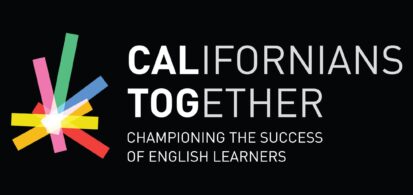As school districts kick off the 2020-21 school year and address the challenges presented by the ongoing COVID-19 crisis, equity must be front and center. Equity in this context means that reopening plans consider the needs of the most vulnerable students and have explicit strategies and investments to ensure that opportunity and achievement gaps are not exacerbated. Given some of the gaps in access to education that have been documented from the spring closures, Californians Together recommends that districts ensure that the needs of English learners are addressed in their Learning Continuity and Attendance Plans.
Districts have an opportunity to describe their plans for school reopenings and how they will address the needs of our most vulnerable students through the development of their Learning Continuity and Attendance Plans (LCPs), which must be adopted by September 30th. To ensure that the needs of English learners are addressed in their LCP, we encourage districts to provide a clear description and definition of the following factors.
- Designated and Integrated instruction in English language development (ELD). Education Code 43503(b)(5) clearly states that distance learning shall include “Designated and integrated instruction in English language development pursuant to Section 11300 of Title 5 of the California Code of Regulations for English learners, including assessment of English language proficiency, support to access curriculum, the ability to reclassify as fully English proficient, and, as applicable, support for dual language learning.” LCPs must provide a clear description of how designated and integrated ELD instruction will be delivered within distance learning.
- Daily live interaction and synchronous learning time that all students will receive. Education Code 43503(a)(6) clearly states that distance learning shall include “Daily live interaction with certificated employees and peers for purposes of instruction, progress monitoring, and maintaining school connectedness.” School districts should clearly define what daily live interaction will entail and incorporate expectations for synchronous learning, including the time and frequency expectations for every student, grade level, and the format. In addition, districts should describe any modifications for English learners, students with disabilities, homeless students, foster youth, and socio-economically disadvantaged students.
- Support that will be provided to parents and families. This support should be focused on opportunities to learn strategies to help enhance the education of their children at home. In addition, this should also include opportunities for authentic engagement that informs and has an impact on district and school decision-making. All of these support opportunities must be differentiated to ensure the engagement of families whose primary home language is other than English.
- Social-Emotional Supports. Providing students with access to social-emotional supports is critical during this time of crisis. Moreover, districts should detail strategies to ensure that such supports are accessible to all students and that SEL is incorporated within instruction.
- Alignment and articulation between early childhood education and early elementary education, with supports for dual language learners and their multilingual families. The first five years are a critical window of opportunity for brain, language, and bilingual development. Therefore support for dual language learners and their multilingual families must start from the earliest years possible (i.e. infant/toddler programs, and preschool). Early childhood education should continue to be included within the planning process and aligned with elementary education so that students have a smooth transition into elementary education. This is of particular importance to dual language learners that can be supported in the development of both their home language and English language as early as possible.
To support districts in incorporating these factors within their LCP’s our EL RISE! Initiative (made possible with the support of an Educator Workforce Investment Grant [EWIG] to Californians Together from the California Department of Education) developed two tools aligned to the English Learner Roadmap.
- EL RISE! Reflection and Planning Tool for Administrators provides recommended actions organized by section of the EL Roadmap.
- EL RISE! Learning Continuity Plans Opportunities for addressing English Learner Needs provides recommended actions organized by section of the LCP template.
We encourage all districts, schools, teachers, and community members to review the recommendations in these resources and to continue to do what they can to close opportunity gaps for English learners.
——————————————————————————————————————————-
For wide dissemination of the tools and the report, here are social media posts for each of the five factors:
